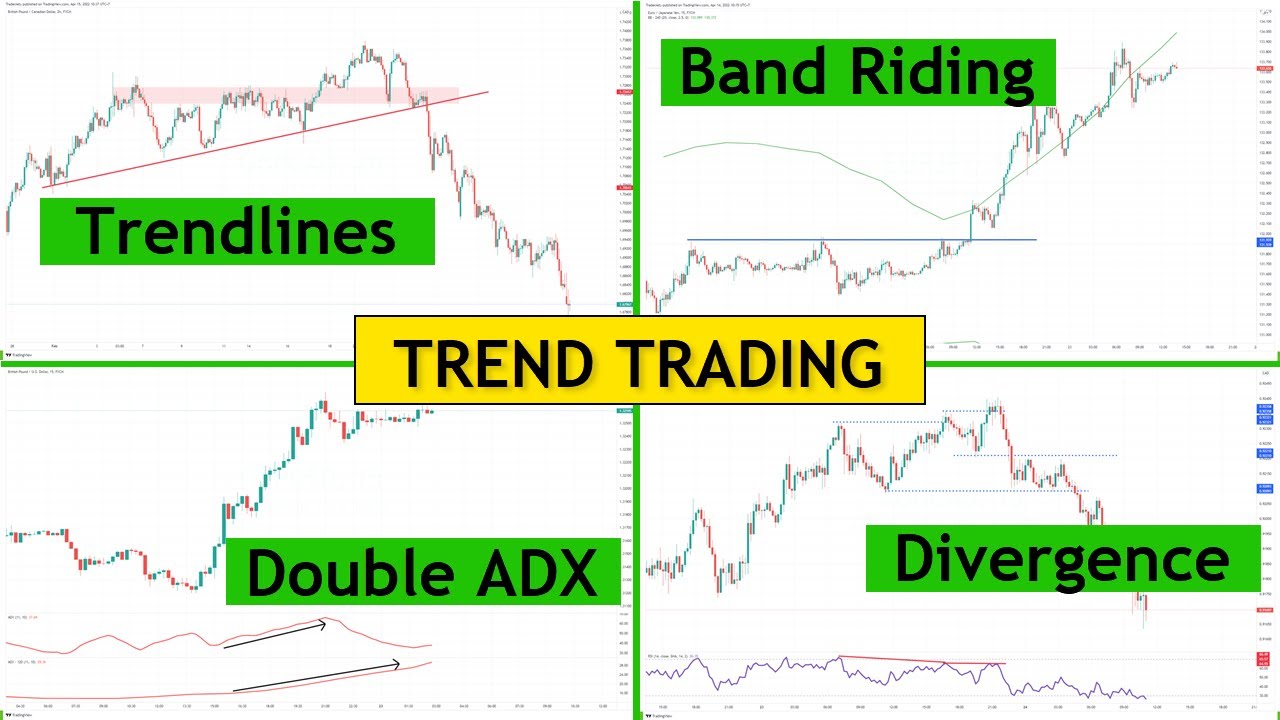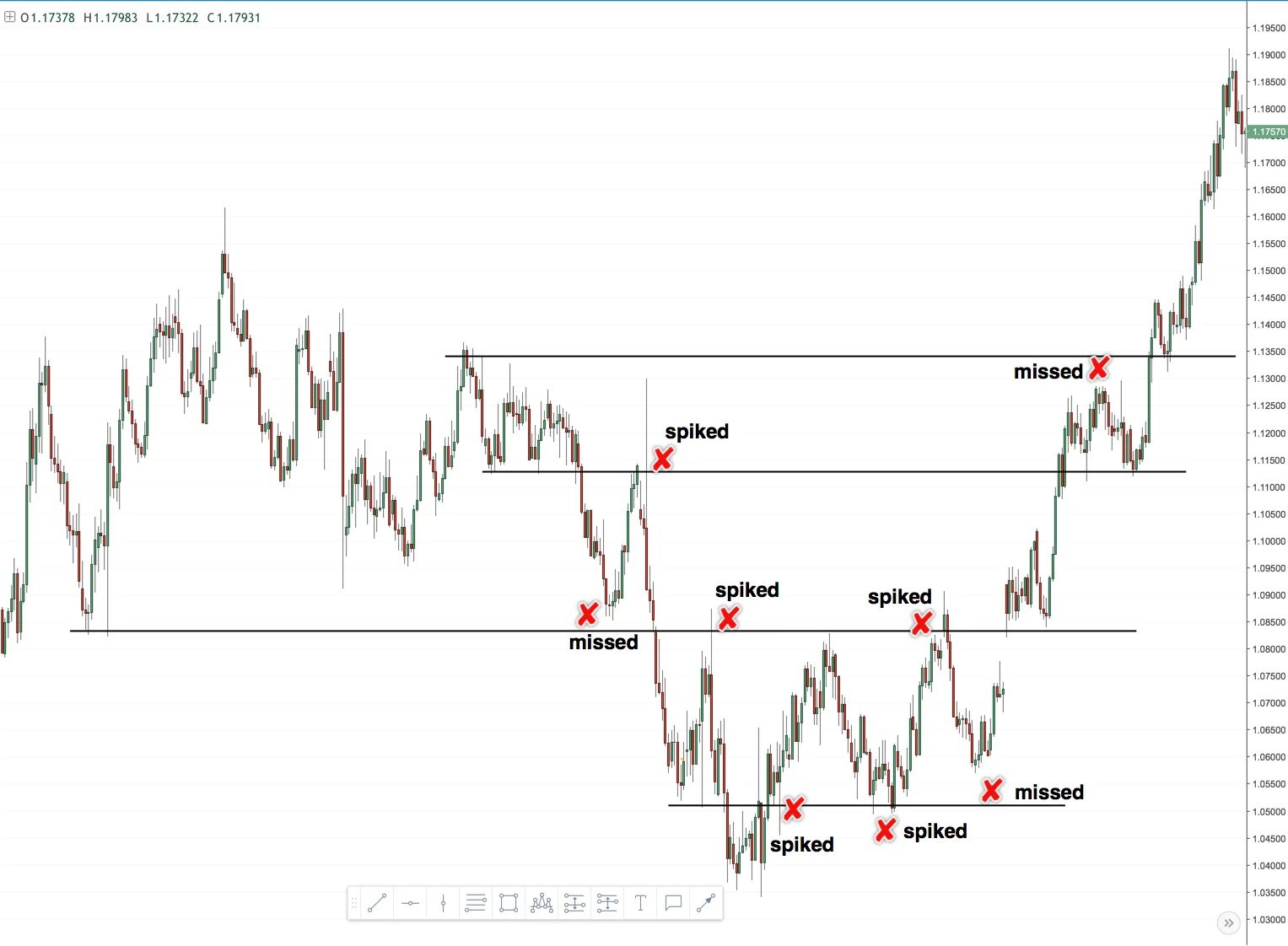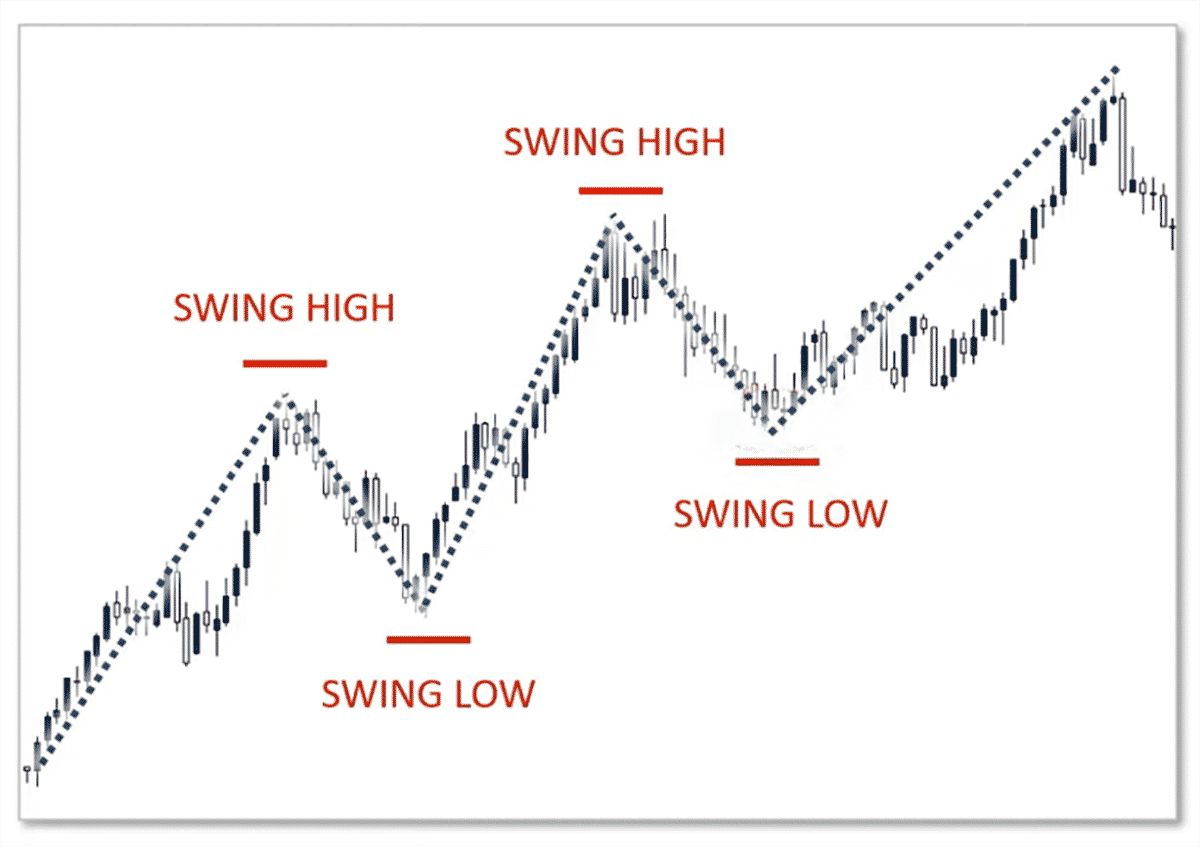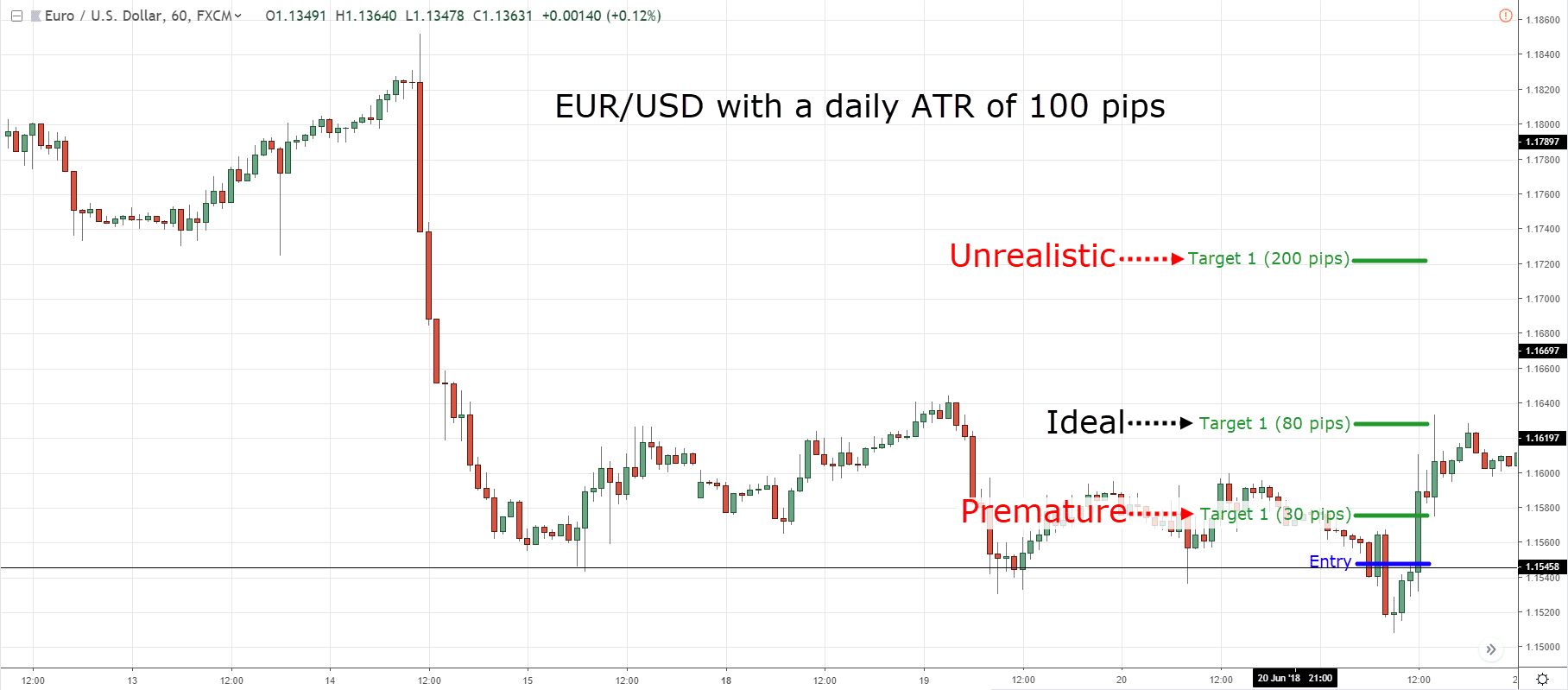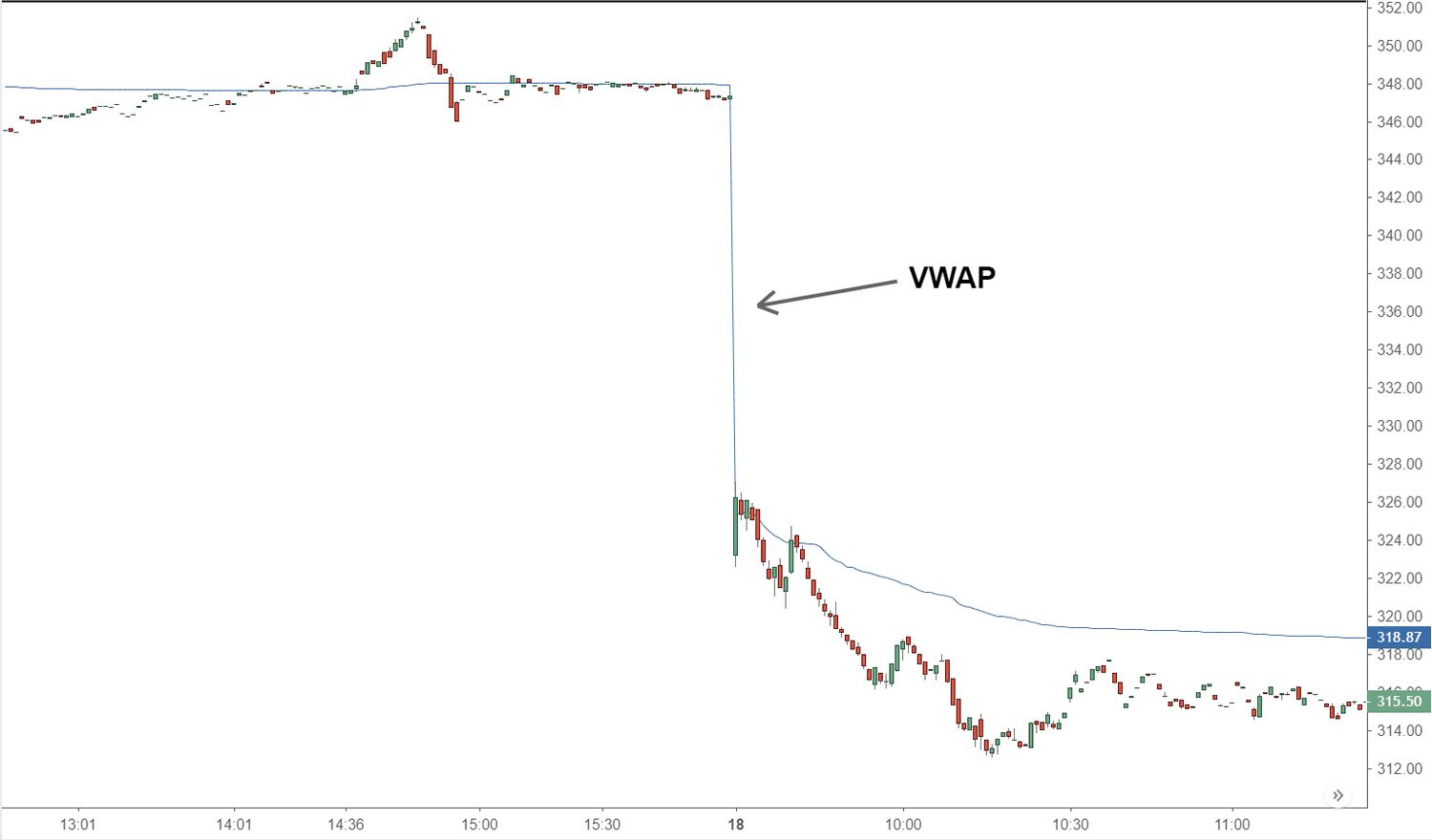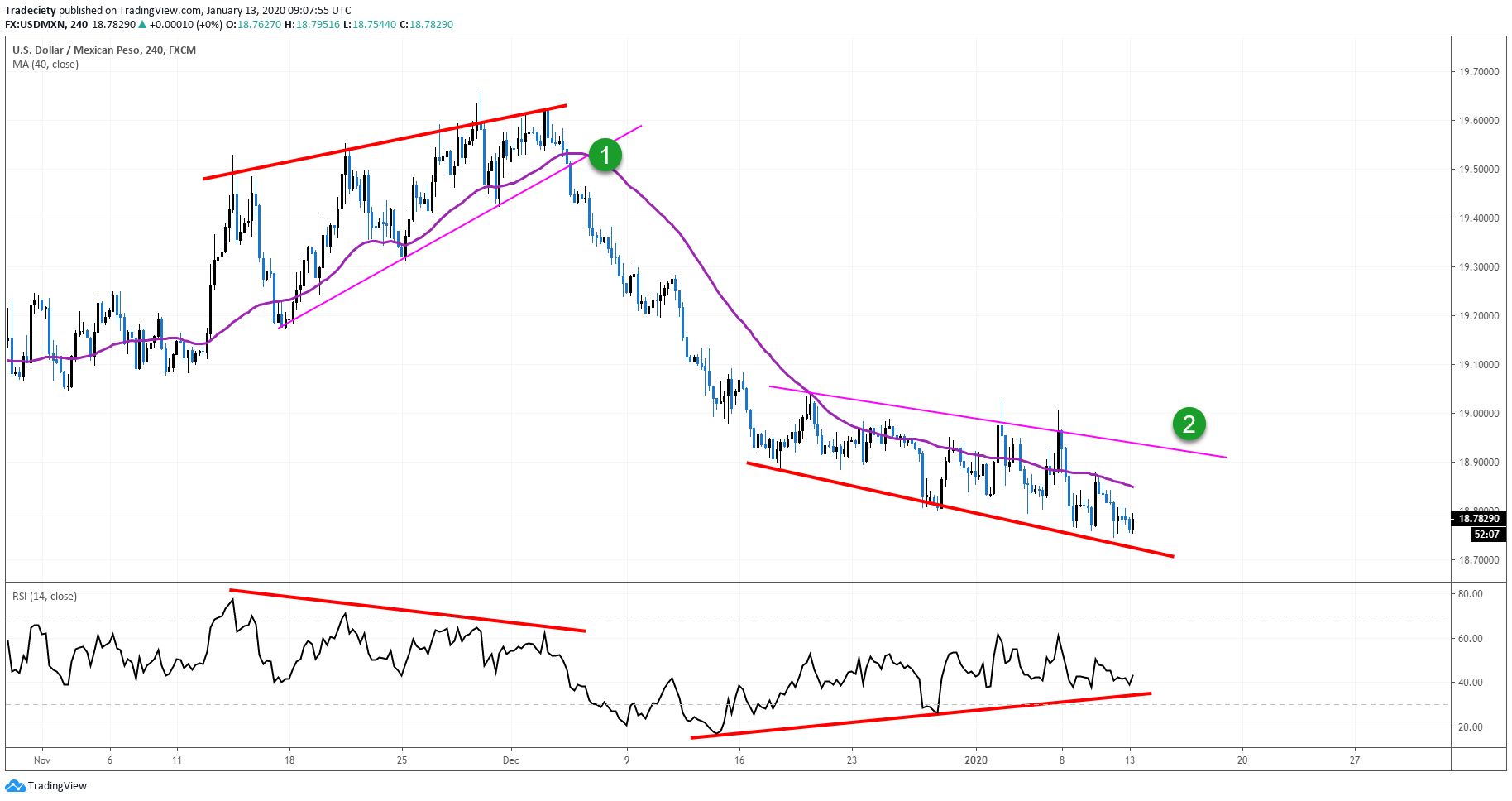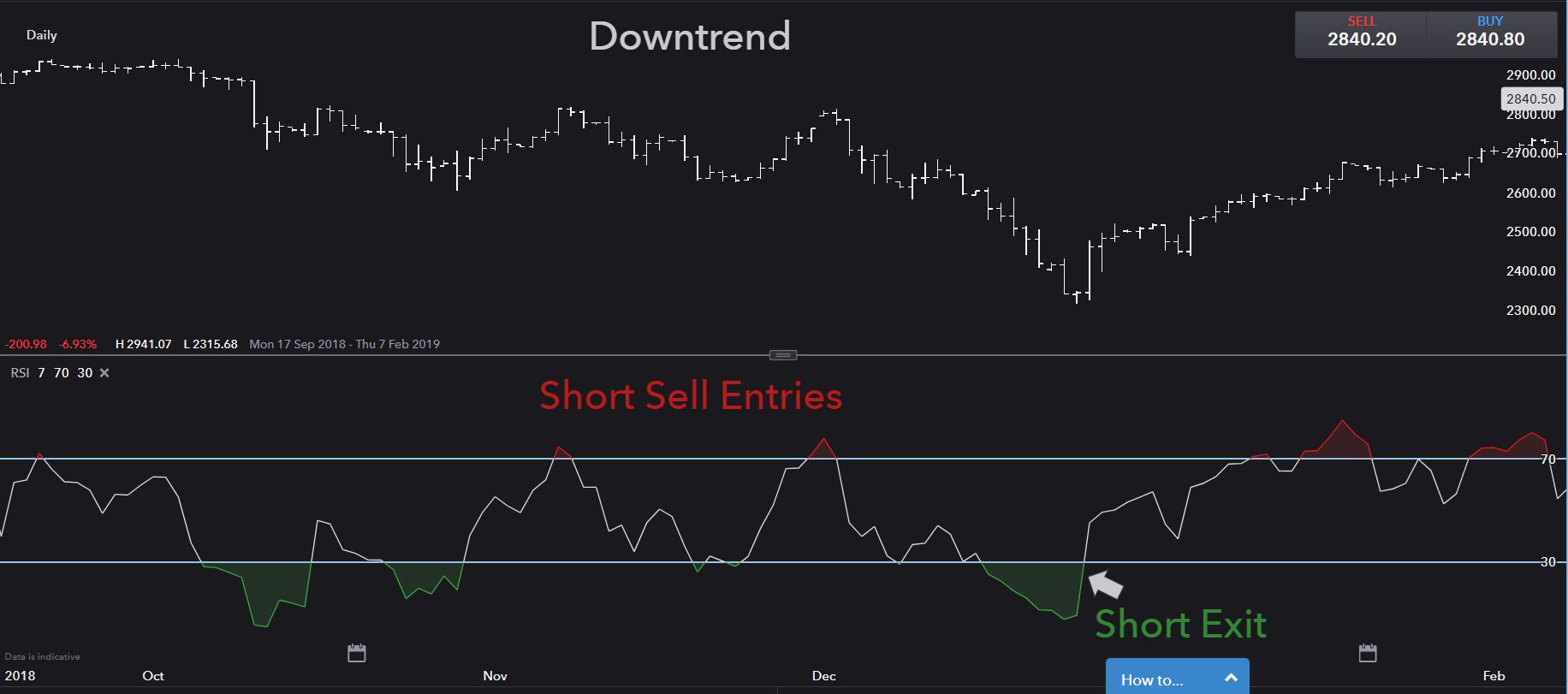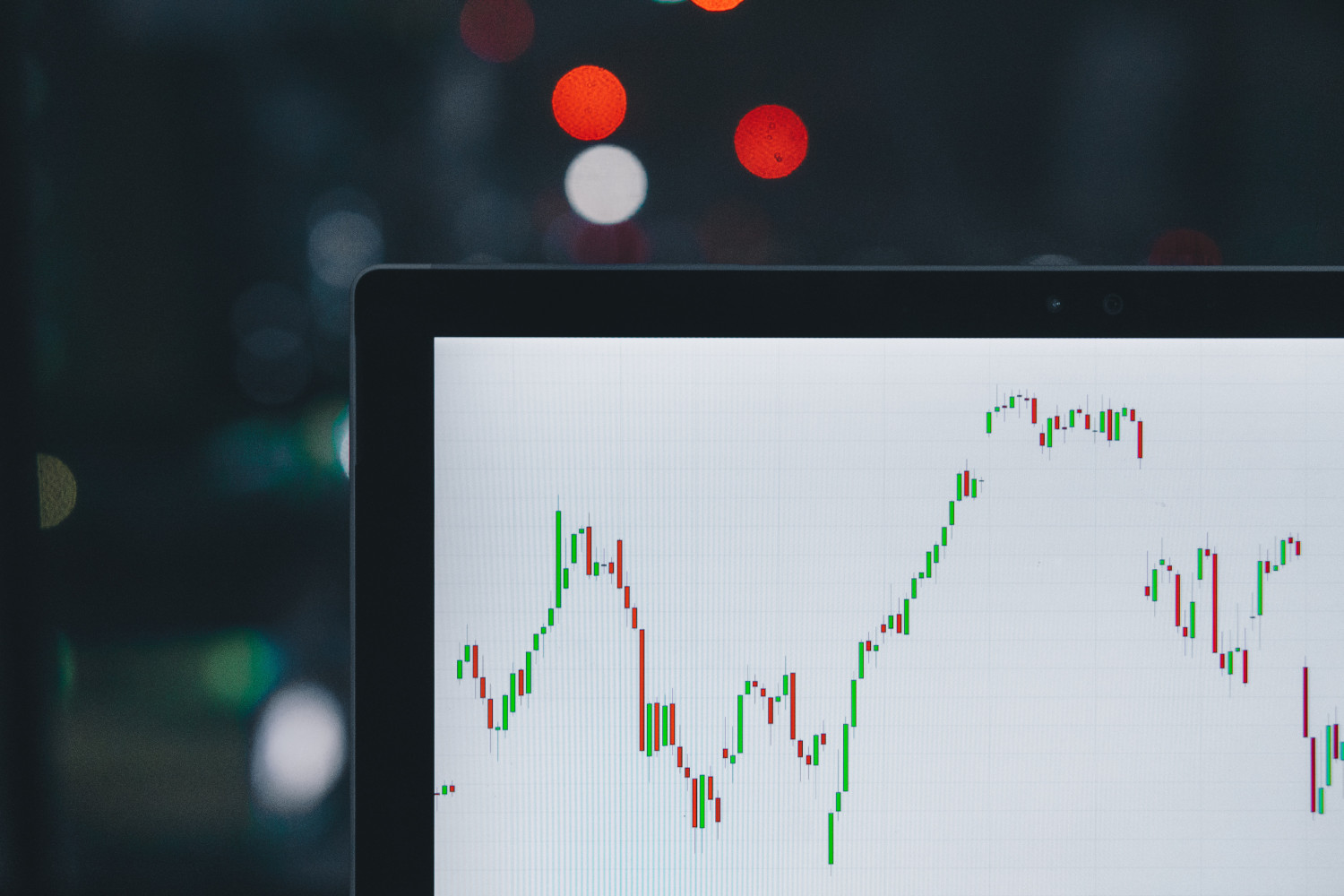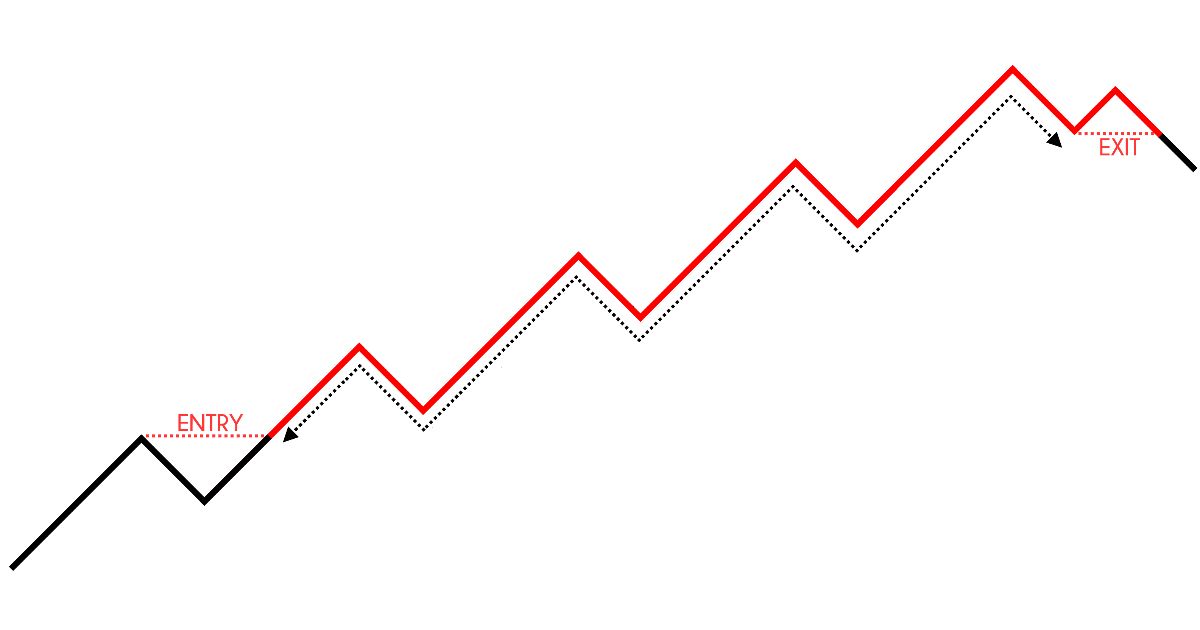Introduction
Trend trading is a popular strategy used in the financial markets to capitalize on the direction of price movements. Traders who employ this method aim to identify and ride the prevailing trend, whether it is an upward or downward movement, to generate consistent profits.
While trend trading can be applied to various assets like stocks, currencies, commodities, and cryptocurrencies, it requires a comprehensive understanding of market dynamics and the ability to identify and interpret trends accurately.
In this article, we will delve into the world of trend trading, exploring its definition, advantages, disadvantages, key indicators, and strategies. We will also discuss the importance of risk management and provide real-life examples to illustrate how trend trading works.
Whether you are a novice trader looking to learn new strategies or an experienced trader seeking to refine your trend trading skills, this article will provide invaluable insights and guidance.
Let’s dive into the world of trend trading and unravel its mysteries.
What is Trend Trading?
Trend trading is a strategy used by traders to analyze and take advantage of the directional movement in the markets. The underlying principle of trend trading is based on the belief that markets tend to move in trends rather than random price fluctuations. By identifying and following these trends, traders aim to profit from the continuous price movements in a given direction.
A trend is defined as the general direction in which an asset’s price is moving over a prolonged period. It can be categorized into three main types: uptrend, downtrend, and sideways (also known as a range-bound market).
An uptrend occurs when the price of an asset is consistently making higher highs and higher lows. This indicates a bullish sentiment in the market, with buyers in control and pushing the price higher.
A downtrend, on the other hand, is characterized by lower lows and lower highs. In this scenario, sellers dominate the market, leading to a bearish sentiment and a declining price trend.
A sideways trend, or a range-bound market, is when the price is moving within a specific range, with neither a clear upward nor downward direction.
Trend traders aim to identify these trends early and enter positions in the direction of the prevailing trend. They seek to ride the momentum and capture substantial profits as the trend continues.
Traders utilize various technical analysis tools and indicators to identify and confirm the presence of a trend. These tools help to filter out market noise and provide objective criteria for trend identification.
Trend trading can be applied to various timeframes, from short-term day trading to longer-term position trading. The time horizon of the trader and the asset being traded will influence the timeframe chosen for trend analysis.
It is important to note that trend trading is not a foolproof strategy and does not guarantee profit in every trade. Markets can experience sudden reversals or periods of consolidation, leading to false signals or choppy price movements. Therefore, risk management, proper position sizing, and the use of stop-loss orders are crucial in trend trading.
In the next section, we will explore the advantages and disadvantages of trend trading, providing a well-rounded perspective on the strategy.
Advantages of Trend Trading
Trend trading offers several advantages for traders looking to take advantage of market trends and generate consistent profits. Here are some key advantages of trend trading:
1. Profit Potential
One of the main advantages of trend trading is the potential for significant profits. By identifying and riding a strong and sustained trend, traders can capture substantial price movements and maximize their gains. Trend trading allows traders to stay in profitable trades for an extended period, potentially increasing their overall profitability.
2. Clear and Objective Entry and Exit Signals
Trend trading relies on specific technical analysis tools and indicators to identify and confirm trends. This provides traders with clear and objective entry and exit signals. By using predefined criteria to enter and exit trades, trend traders can eliminate emotional decision-making and rely on a systematic approach based on concrete market data.
3. Reduced Market Noise
One of the challenges in trading is filtering out market noise or false signals. Trend trading helps overcome this issue by focusing on sustained and significant price movements. Traders can avoid getting caught in short-term price fluctuations and concentrate on riding the longer-term trend.
4. Ability to Capture Long-Term Trends
Trend trading allows traders to capture long-term trends, which often provide higher profit potential than short-term trades. By staying in trades for an extended period, trend traders can benefit from the full extent of major market movements.
5. Flexibility in Timeframes
Another advantage of trend trading is the flexibility it offers in terms of timeframes. Trend trading can be applied to various timeframes, from short-term to long-term, allowing traders to choose the approach that aligns with their trading style and preferences.
6. Simplicity and Clarity
Trend trading can be understood and implemented relatively easily compared to other trading strategies. By focusing on identifying and following trends, traders can keep their trading approach simple and clear, avoiding the need for complex indicators or extensive market knowledge.
In the next section, we will explore the potential drawbacks and disadvantages of trend trading to provide a balanced view of this strategy.
Disadvantages of Trend Trading
While trend trading can be a profitable strategy, it is not without its potential drawbacks. Here are some key disadvantages of trend trading that traders should be aware of:
1. Late Entry and Exit
One of the challenges of trend trading is that by the time a trend is identified and confirmed, a significant portion of the price movement may have already occurred. Traders may enter trades late, resulting in missed profit opportunities. Similarly, trends can reverse abruptly, and traders may exit their positions late, resulting in missed exit points and potential losses.
2. False Signals
Trends are not always straightforward, and markets can experience periods of consolidation or false breakouts. These false signals can lead to losses if traders enter trades based on erroneous trend identification. It is crucial to use additional confirmation indicators to reduce the risk of false signals and validate the presence of a solid trend.
3. Drawdowns during Trend Reversals
Market trends don’t last forever, and at some point, trends can reverse or enter into periods of consolidation. Traders who fail to spot trend reversals can experience drawdowns, where their open positions move against them and result in losses. Risk management techniques, including the use of stop-loss orders, are essential to protect against these potential drawdowns.
4. Challenging in Ranging Markets
Trend trading relies on identifying and capitalizing on trends. However, during periods of ranging markets or sideways movements, trends may not be clearly defined, making trend trading challenging. Traders may find themselves getting caught in false breakouts or experiencing choppy price movements that result in poor trading performance.
5. Emotional Challenges
Staying disciplined and adhering to the defined trend trading strategy can be emotionally challenging for traders. It requires patience, as trends can take time to develop, and there may be periods of waiting for the right entry or exit signals. Additionally, experiencing consecutive losses or missed profit opportunities can impact a trader’s confidence and emotional well-being.
6. Potential for Missed Counter-Trend Opportunities
Trend traders focus on following the prevailing trend and may miss out on potential counter-trend opportunities. While counter-trend trading carries its own risks, skilled traders can sometimes capitalize on short-term price reversals for quick profits. However, trend traders may overlook these opportunities due to their focus on riding the primary trend.
Despite these disadvantages, trend trading can still be a profitable strategy when implemented with proper risk management techniques, thorough market analysis, and continuous monitoring of trade positions.
How to Identify a Trend
Identifying a trend is an essential step in trend trading. Traders need to accurately determine the direction of the market to enter trades in line with the prevailing trend. Here are some key methods and tools used to identify a trend:
1. Price Action Analysis
Price action analysis involves studying the raw price movements on a chart without the use of indicators. Traders look for patterns such as higher highs and higher lows in an uptrend or lower lows and lower highs in a downtrend. By analyzing price patterns, traders can identify the direction of the trend and make informed trading decisions.
2. Moving Averages
Moving averages are popular trend indicators used to identify the direction and strength of a trend. The most commonly used moving averages are the simple moving average (SMA) and the exponential moving average (EMA). Traders often look for the crossover of shorter-term moving averages above longer-term moving averages as a signal of an uptrend, and vice versa for a downtrend.
3. Trendlines
Trendlines are lines drawn on a chart to connect consecutive higher lows in an uptrend or lower highs in a downtrend. Trendlines provide visual confirmation of the trend direction and can assist in identifying potential entry or exit levels. Traders often look for bounces or breaks of trendlines as signals of trend continuation or reversal.
4. Trend Indicators
There are numerous technical indicators specifically designed to identify trends, such as the Average Directional Index (ADX), Moving Average Convergence Divergence (MACD), and Parabolic SAR. These indicators help quantify the strength of the trend and provide signals for potential trend reversals or continuations.
5. Support and Resistance Levels
Support and resistance levels are areas on a chart where the price has historically had difficulty moving above or below. In an uptrend, support levels act as potential buying zones, while resistance levels in a downtrend can act as potential selling zones. The ability of price to break through these levels can provide confirmation of a trend.
6. Volume Analysis
Volume analysis can provide valuable insights into the strength of a trend. In an uptrend, increasing volume during price advances indicates stronger buying pressure. Conversely, in a downtrend, increasing volume during price declines suggests stronger selling pressure. By analyzing volume alongside price movements, traders can validate the presence of a trend.
It is important to note that no single method or tool is foolproof in identifying trends. Traders often use a combination of techniques to increase the accuracy of their trend analysis. Additionally, using multiple timeframes can provide a broader view of the trend, confirming the presence of a trend across different time horizons.
By utilizing these methods and tools, trend traders can gain a better understanding of market dynamics and make informed trading decisions based on the prevailing trend.
Key Indicators for Trend Trading
When it comes to trend trading, there are several key indicators that traders rely on to identify and confirm trends. These indicators help traders gauge the strength and direction of a trend, providing valuable insights for making trading decisions. Here are some of the key indicators used in trend trading:
1. Moving Averages
Moving averages are widely used trend indicators that smooth out price fluctuations over a specified period. Traders often look for the crossover of shorter-term moving averages (such as the 50-day SMA) above longer-term moving averages (such as the 200-day SMA) as a signal of an uptrend. Conversely, a crossover of the shorter-term moving average below the longer-term moving average can indicate a downtrend.
2. Average Directional Index (ADX)
The Average Directional Index (ADX) is a popular indicator used to measure the strength of a trend. It provides a numeric value between 0 and 100, indicating whether a market is trending or ranging. Traders typically look for ADX values above 25 to confirm the presence of a strong trend.
3. Moving Average Convergence Divergence (MACD)
The Moving Average Convergence Divergence (MACD) is a versatile indicator that combines moving averages with a histogram. It helps traders identify the trend direction as well as potential entry and exit points. When the MACD line crosses above the signal line, it generates a bullish signal indicating an uptrend. Conversely, when the MACD line crosses below the signal line, it generates a bearish signal indicating a downtrend.
4. Relative Strength Index (RSI)
The Relative Strength Index (RSI) is a momentum oscillator that measures the speed and change of price movements. Traders commonly use this indicator to identify overbought and oversold conditions in the market. In an uptrend, the RSI often remains above 50, indicating bullish momentum. In a downtrend, the RSI tends to stay below 50, indicating bearish momentum.
5. Bollinger Bands
Bollinger Bands consist of a middle band (usually a 20-day simple moving average) and an upper and lower band that reflect price volatility. They can help traders identify potential trend reversals or continuation patterns. When the price moves near the upper band, it suggests an overbought condition, indicating a potential reversal. Conversely, when the price approaches the lower band, it suggests an oversold condition, indicating a potential upward movement.
6. Ichimoku Cloud
The Ichimoku Cloud is a comprehensive indicator that provides information on trend direction, support and resistance levels, and potential entry and exit points. It consists of multiple lines and a shaded area called the cloud. Traders often look for the price to be above the cloud for an uptrend and below the cloud for a downtrend.
These indicators are just a few examples of the tools trend traders use to identify and confirm trends. Traders often combine multiple indicators and analyze them in conjunction with other technical analysis techniques to increase the accuracy of trend analysis and make well-informed trading decisions.
Strategies for Trend Trading
Trend trading involves capitalizing on the directional movement of a market trend. Traders employ various strategies to take advantage of these trends and generate profits. Here are some popular strategies used in trend trading:
1. Trend Following
The trend following strategy involves identifying a strong and established trend and entering trades in the same direction as the trend. Traders aim to ride the trend for as long as possible, capturing the majority of the price movement. This strategy often utilizes indicators such as moving averages, trendlines, and price patterns to identify trends and confirm market direction.
2. Breakout Trading
Breakout trading involves exploiting significant price movements that occur when a market breaks out of a trading range or a well-defined technical pattern. Traders look for breakouts above resistance levels in an uptrend or below support levels in a downtrend. This strategy aims to capture the explosive moves that can occur when a trend gains momentum.
3. Pullback Trading
Pullback trading, also known as retracement trading, involves entering trades during temporary price reversals within an established trend. Traders look for price pullbacks or retracements against the trend and enter trades at favorable levels, expecting the trend to resume. This strategy aims to enter trades at better risk-reward ratios, potentially maximizing profits during a trend.
4. Trend Reversal Trading
Trend reversal trading involves identifying potential trend reversals and entering trades in the opposite direction of the prevailing trend. Traders look for signs of trend exhaustion, such as divergences, chart patterns, or breakouts of trendlines, to anticipate a reversal. Trend reversal trading can be more challenging and carries higher risk, but it can provide opportunities for early entry into a new trend.
5. Multiple Timeframe Analysis
Multiple timeframe analysis involves examining the trend on different timeframes to gain a broader perspective. Traders analyze longer-term trends on higher timeframes, such as daily or weekly charts, to identify the primary trend direction. Then, they drill down to lower timeframes, such as hourly or 15-minute charts, to find optimal entry points in alignment with the primary trend. This strategy helps traders avoid trading against the higher timeframe trend.
6. Trend Channel Trading
Trend channel trading involves identifying the boundaries of a trend channel, which are formed by drawing parallel trendlines. Traders look for trading opportunities near the support or resistance levels of the channel, buying at the lower trendline during an uptrend and selling at the upper trendline during a downtrend. This strategy allows traders to trade within the confines of a trend and take advantage of price bounces off the channel boundaries.
These strategies provide a starting point for traders looking to engage in trend trading. It is essential to adapt and refine these strategies based on individual trading preferences, risk tolerance, and market conditions. Moreover, proper risk management, including position sizing, stop-loss orders, and profit targets, should be practiced to enhance the effectiveness and profitability of these trend trading strategies.
Risk Management in Trend Trading
Effective risk management is crucial in trend trading to protect capital, minimize losses, and ensure long-term success. While trend trading offers the potential for high profits, it also carries inherent risks. Here are some key risk management principles that trend traders should follow:
1. Position Sizing
Position sizing refers to the determination of the appropriate amount of capital to allocate to each trade. Traders should define their risk tolerance and set a maximum percentage of their trading capital to risk on any single trade. By controlling the size of each position in relation to account size, traders can limit their exposure and prevent significant losses if a trade goes against them.
2. Stop-Loss Orders
Stop-loss orders are essential risk management tools that help limit potential losses on trades. A stop-loss order is placed at a predetermined price level, representing the maximum acceptable loss for a trade. If the price reaches or exceeds the stop-loss level, the trade is automatically closed, reducing the potential loss. Traders must set stop-loss levels based on their risk tolerance, market conditions, and the volatility of the asset being traded.
3. Trailing Stop-Loss Orders
A trailing stop-loss order is a dynamic stop-loss order that adjusts as the price of an asset moves in the trader’s favor. It trails behind the price movement, maintaining a certain distance or percentage from the highest price attained. Trailing stop-loss orders allow traders to lock in profits as the trend progresses while still providing protection against potential reversals.
4. Diversification
Diversification is a risk management technique that involves spreading trading capital across multiple assets or securities. By diversifying their portfolio, traders can reduce the impact of losses from individual trades or assets. Diversification allows traders to balance their exposure across different sectors, asset classes, or markets, lowering the overall risk of their trading activities.
5. Risk-to-Reward Ratio
Assessing the risk-to-reward ratio is important for proper risk management in trend trading. Traders should consider the potential reward of a trade in relation to the risk undertaken. A favorable risk-to-reward ratio ensures that the potential profit on a trade outweighs the potential loss. By selecting trades with a higher probability of success and a favorable risk-to-reward ratio, traders can increase their overall profitability.
6. Continuous Monitoring and Adaptation
Risk management is an ongoing process that requires continuous monitoring of trades and market conditions. Traders must stay vigilant, consistently monitoring their open positions, market trends, and news that may impact their trades. If market conditions change or the trend weakens, traders may need to adjust their stop-loss levels, take partial profits, or exit trades to manage risk effectively.
By following these risk management principles, trend traders can enhance their trading performance, protect their capital, and withstand potential losses. It is crucial to remember that trend trading involves both winning and losing trades, and risk management is the key to long-term success in navigating the volatile financial markets.
Examples of Trend Trading
To better understand how trend trading works in practice, let’s explore a couple of examples:
1. Uptrend Example:
Suppose you identify an upward trend in a stock, backed by increasing volume and positive news. The stock has been consistently making higher highs and higher lows over the past few weeks. As a trend trader, you decide to enter a long position.
You set a stop-loss order below the recent swing low to protect against a potential trend reversal. Additionally, you define a profit target based on a favorable risk-to-reward ratio. As the price continues to rise, you adjust your trailing stop-loss order to lock in profits and let the trade run as long as the upward trend persists.
Eventually, the stock reaches your profit target or exhibits signs of a potential trend reversal. At this point, you exit the trade and realize your profit. By following the trend, managing your risk, and letting your profits run, you have successfully capitalized on the uptrend and generated profit.
2. Downtrend Example:
Let’s consider a currency pair that has been in a consistent downtrend due to weak economic data and negative market sentiment. As a trend trader, you decide to take advantage of this downward movement by entering a short position.
You place a stop-loss order above the recent swing high to protect against any potential trend reversal. You also set a profit target based on your risk-to-reward ratio. As the price continues to decline, you adjust your trailing stop-loss order to lock in profits and ride the downtrend for as long as it persists.
Eventually, the currency pair reaches your profit target or shows signs of a potential trend reversal. At this point, you exit the trade, realizing your profit. By following the downtrend, managing your risk, and adapting your trailing stop-loss levels, you have successfully capitalized on the downward trend and generated profit.
These examples demonstrate how trend trading enables traders to identify profitable opportunities by following prevailing trends. By employing appropriate risk management techniques, traders can maximize profits and minimize losses as they ride the momentum of the trend.
Conclusion
Trend trading is a powerful strategy that allows traders to capitalize on the directional movement of market trends. By identifying and following trends, traders aim to generate consistent profits and increase their trading success. However, success in trend trading requires a comprehensive understanding of market dynamics, the ability to identify trends accurately, and effective risk management.
In this article, we explored the concept of trend trading, its advantages, and disadvantages, and the key indicators and strategies used in this approach. We discussed the importance of risk management techniques such as position sizing, stop-loss orders, and diversification to protect against potential losses and achieve long-term profitability. Additionally, we provided real-life examples to illustrate how trend trading works in practice.
It is crucial for trend traders to continuously adapt and refine their strategies based on changing market conditions. This includes monitoring trades, adjusting stop-loss levels, and staying informed about factors that may impact trends, such as economic news or geopolitical events.
While trend trading can be a profitable strategy, it is not without risks. Traders should approach trend trading with a disciplined mindset, patience, and a willingness to accept that not all trades will be successful. Learning from mistakes, continuous learning, and honing technical analysis skills are essential for improving performance and achieving consistent results.
By incorporating the principles and strategies discussed in this article, traders can navigate the markets with confidence, identify profitable trends, and mitigate risks. Trend trading, when executed with diligence and proper risk management, can be a valuable tool in a trader’s arsenal, enhancing their ability to achieve long-term success in the financial markets.







